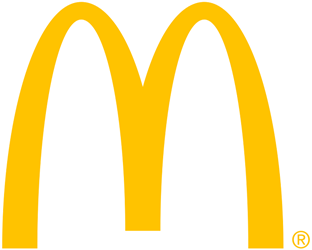Restaurant And Hospitality News – May 8, 2017

By Christine Kern, contributing writer

In news this week, McDonald’s launches a new line of upscale sandwiches and a “Frork”; Papa John’s looks to digital ordering for the future; and a new report finds a real disconnect between diners’ desires for restaurant technology and restaurant adoption of it.
McDonald’s Introduces New Signature Sandwiches and the “Frork” To Help Boost Sales
McDonald’s has proven that it has a sense of humor and is willing to do whatever it takes to win back customers to the chain. It has launched a new line of signature, customizable sandwiches and a new utensil it dubbed the “Frork” – short for Fry Fork – which is handy for sopping up all the extra gooey toppings from them, according to CNBC. The frork is essentially a fork whose tines are French fries. The company will make a limited supply of the Frorks available at participating restaurants with the purchase of one of the new Signature Crafted Recipe sandwiches on May 5. The sandwiches range between $4.99 and $5.19 in price.
“We started with All Day Breakfast, updated our Chicken McNuggets, offered new Mac sandwich sizes for every occasion and now we’re introducing Signature Crafted Recipes because they are inspired by our customers,” explained Michael Haracz, McDonald’s chef, in a statement. “And while the Frork is supremely superfluous, it show that McDonald’s is willing to do whatever it takes to help them enjoy every last bite.”
The new Signature Crafted Recipes line is the latest step in the chain’s efforts to win back business, following their commitment to removing artificial ingredients in some items and offering a wider variety of more upscale choices. The company has also announced the switch from frozen Quarter Pounder beef patties to fresh ones across the country by the middle of 2018.
And while the company recognizes that not all of its initiatives will be successful, the commitment to meeting customer expectations is real. "Not everything [McDonald's] is trying will work, but some of it will," Mark Kalinowski, a Nomura-Instinet analyst, told CNBC. "But that's the point. You don't want a McDonald's that sits back and is complacent and happy with all the successes it's achieved in the past. You want a McDonald's that continues to evolve for the better and that's what McDonald's is doing under [CEO Steve Easterbrook's] leadership."
Papa John’s Banks On Digital Future
Pizza chain Papa John’s has placed its future in digital hands, according to the Nation’s Restaurant News, and expects that digital orders could reach 80 percent over the next few years. Currently, more than 60 percent of its orders come from one of the chain’s digital platforms, with the majority placed through its mobile ordering app. Execs say that number should just keep climbing, and that’s a good thing for the bottom line, since mobile orders mean less employee time answering calls. And Papa John’s CEO John Schattner recognized that aspect, stating “One negative about operations is having to answer the phone.”
In a first-quarter earnings call, Papa John’ s executives reported that many of the Papa John’s markets already get more than 70 percent of their orders via digital, so the goal of 80 percent is highly realistic. Papa John’s president Steve Ritchie said “We have an opportunity to get to 80-percent-plus over the next several years here.” And digital orders also traditionally have a higher spend rate than phone orders, in addition to improving customer service and helping to improve labor efficiency over time. Ritchie explained, “At this stage of the game, we’ve made more of our investment” geared to driving business through improved customer experience.
New Report Find Diners Want More Tablets To Improve Customer Experience
There is a serious disconnect between restaurant owners’ and diners when it comes to the adoption of newer restaurant technology like tablets and kiosks, according to the results of the Restaurant Success in 2017 Report, released by Toast POS . The survey found that 68 percent of diners feel that they have an improved experience when servers use handheld tablets; however, only 41 percent of restaurants have or will soon have these tablets. Similarly, over half (52 percent) of diners believe tabletop tablets improve the dining experience but only 19 percent of restaurants have or will soon have them. And 65 percent of consumers use self-order kiosks sometimes or every time one is available, yet only 13 percent of operators have or will soon have them in their restaurants.
Toast POS believes that rising consumer demand will push drastic adoption of new technologies as restaurants move to meet customer demands. The early adopters will obviously benefit the most. For instance, Toast POS found that restaurants using handheld server tablets increase their revenue by 3-5 times in both quick-serve and sit-down environments, while restaurants using kiosks report seeing higher ticket sizes on average.
Of all dining sectors, fine dining is the most tech-savvy, most likely to have a website, accept gift cards, leverage email databases, and utilize online reservations platforms.
The survey did find that even though some restaurants expressed little interest in embracing new technology, the majority of both restaurant owners and diners agree that technology is beneficial to the restaurant industry and business operations. In 2017, new features like text message marketing and restaurant smartphone apps will each be adopted by more than one-fifth of restaurants, signaling a marked shift in restaurant-customer relations for the future.
